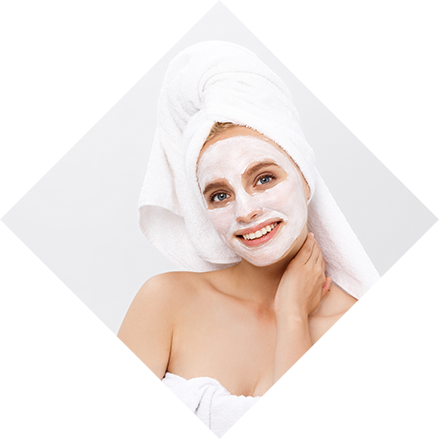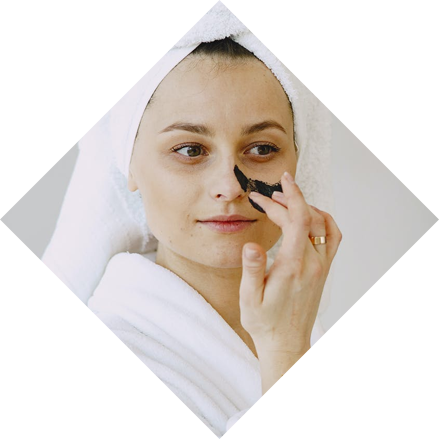Melasma
1.jpg)
Need An Appointment?
Drop Your Number here
Warts: Causes, Types, Symptoms, and Treatment Options
Warts are small, rough, noncancerous growths that appear on the skin when it becomes infected with certain strains of the human papillomavirus (HPV). Though usually harmless, warts can be uncomfortable, unsightly, and contagious, spreading through direct contact or by sharing personal items. They can appear anywhere on the body, but are most common on the hands, feet, face, and genitals. Understanding the causes, types, and treatment options for warts helps in managing and preventing them effectively.
Causes of Warts
Warts are caused by infection with the human papillomavirus (HPV), a group of more than 100 related viruses. When the virus enters the skin through small cuts or abrasions, it triggers rapid growth of cells on the outer layer of the skin, forming a wart.
Key factors that increase the risk of developing warts include:
-
Weakened Immune System:
People with a compromised immune system, such as those with HIV or on immunosuppressive drugs, are more susceptible to warts. -
Skin Contact:
Warts can spread from person to person through direct skin contact or indirectly via surfaces like towels, razors, or shoes. -
Skin Injuries:
Damaged or broken skin provides an entry point for the virus. -
Moist Environments:
HPV thrives in warm, moist environments such as swimming pools, locker rooms, and public showers.
.jpg)
Causes of Warts
Warts are caused by infection with the human papillomavirus (HPV), a group of more than 100 related viruses. When the virus enters the skin through small cuts or abrasions, it triggers rapid growth of cells on the outer layer of the skin, forming a wart.
Key factors that increase the risk of developing warts include:
-
Weakened Immune System:
People with a compromised immune system, such as those with HIV or on immunosuppressive drugs, are more susceptible to warts. -
Skin Contact:
Warts can spread from person to person through direct skin contact or indirectly via surfaces like towels, razors, or shoes. -
Skin Injuries:
Damaged or broken skin provides an entry point for the virus. -
Moist Environments:
HPV thrives in warm, moist environments such as swimming pools, locker rooms, and public showers.
Need An Appointment?
Drop Your Number here
Symptoms of Warts
Warts are usually painless, but depending on their type and location, they can cause discomfort. Common symptoms include:
-
Small, grainy bumps on the skin
-
Rough texture
-
Black dots (tiny clotted blood vessels)
-
Pain or tenderness (especially plantar warts)
-
Itching or irritation in affected areas
Treatment Options for Warts
While some warts may disappear on their own over time, medical treatment ensures faster and safer removal, especially for persistent or painful warts.
-
Topical Treatments:
-
Salicylic Acid: A common first-line treatment that removes layers of the wart gradually.
-
Trichloroacetic Acid: Used by dermatologists for stubborn warts.
-
Imiquimod Cream: Stimulates the immune system to fight the virus.
-
-
Cryotherapy (Freezing):
The wart is frozen with liquid nitrogen, causing it to blister and fall off after a few sessions. -
Electrocautery:
The wart is burned off using an electric current. This method is effective for small warts but may leave a small scar. -
Laser Therapy:
Used for deep or resistant warts, laser treatment destroys the wart tissue with focused light energy. -
Surgical Removal:
For large or recurring warts, minor surgery may be performed to cut out the wart under local anesthesia. -
Chemical Peels:
Used mainly for flat warts, chemical peels help exfoliate the skin and remove infected layers.
Patient Testimonials

She's the best skin doctor I've come across so far. she listens patiently, gives the prominent treatment accordingly. Guys looking for skin treatment must visit Dr Nidhi Bansal, you will get satisfying results👍
- Sanya Sayyed

I consulted with Dr Nidhi Bansal after one of my friend suggested. The doctor is very
calm and well versed with the solutions. I definitely liked the way He made me
understand the issues of my hair sclap.
I am very happy with my own experience with
her and the treatment provided amazing hence I would highly recommend to this doctor for
any skin or hair disease.
- Anu Verma

I was suffering from severe acne on my face. Dr Nidhi told me in detail about the treatment options and customized the procedures for my face. Within one day my redness and acne has reduced by 90%. I am so happy with the results and would recommend Dr Nidhi to everyone for their skin and hair problems.
Priya Rajput

Best doctor I always go to Dr Nidhi skin clinic whenever i have any skin problems . Dr. Nidhi is such a humble + trusted doctor I was dealing with pimples and scars from 6 years, someone told me about Dr Nidhi .I having been taking treatment from 2 months .my acne has gone for forever ,thanks for giving me normal skin best dermatologist in jaipur I got 100 % results , M bhut jayda preshan tha acne , blackheads whiteheads se ,mera face bhut khrab dikhta tha bhut guilty feel hota tha logo ko face krne m now I m confident .thank you doctor
Neeraj Yogi



Patient's Testimonials









